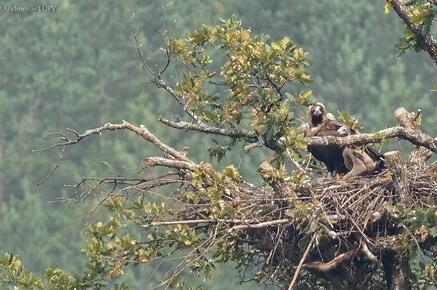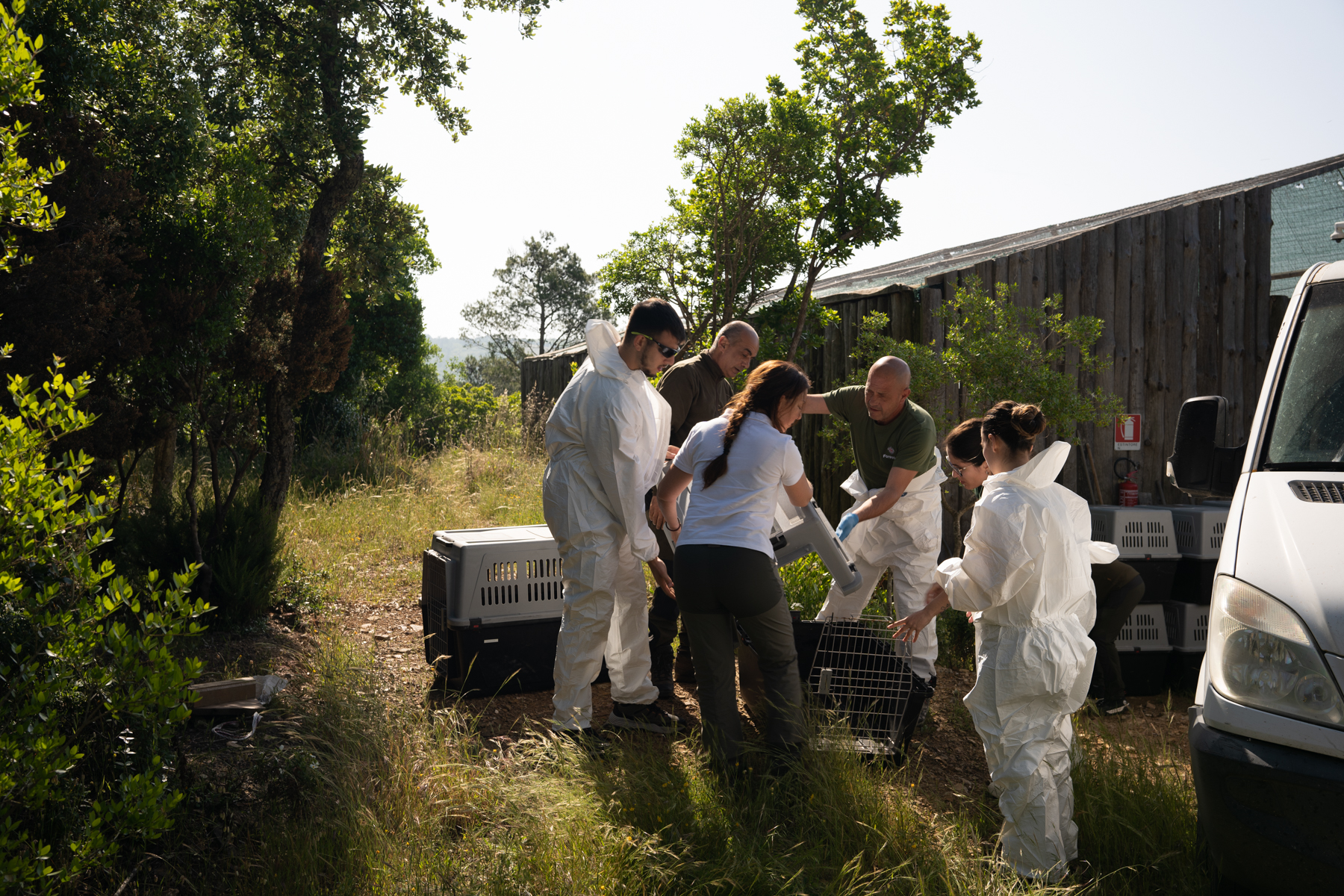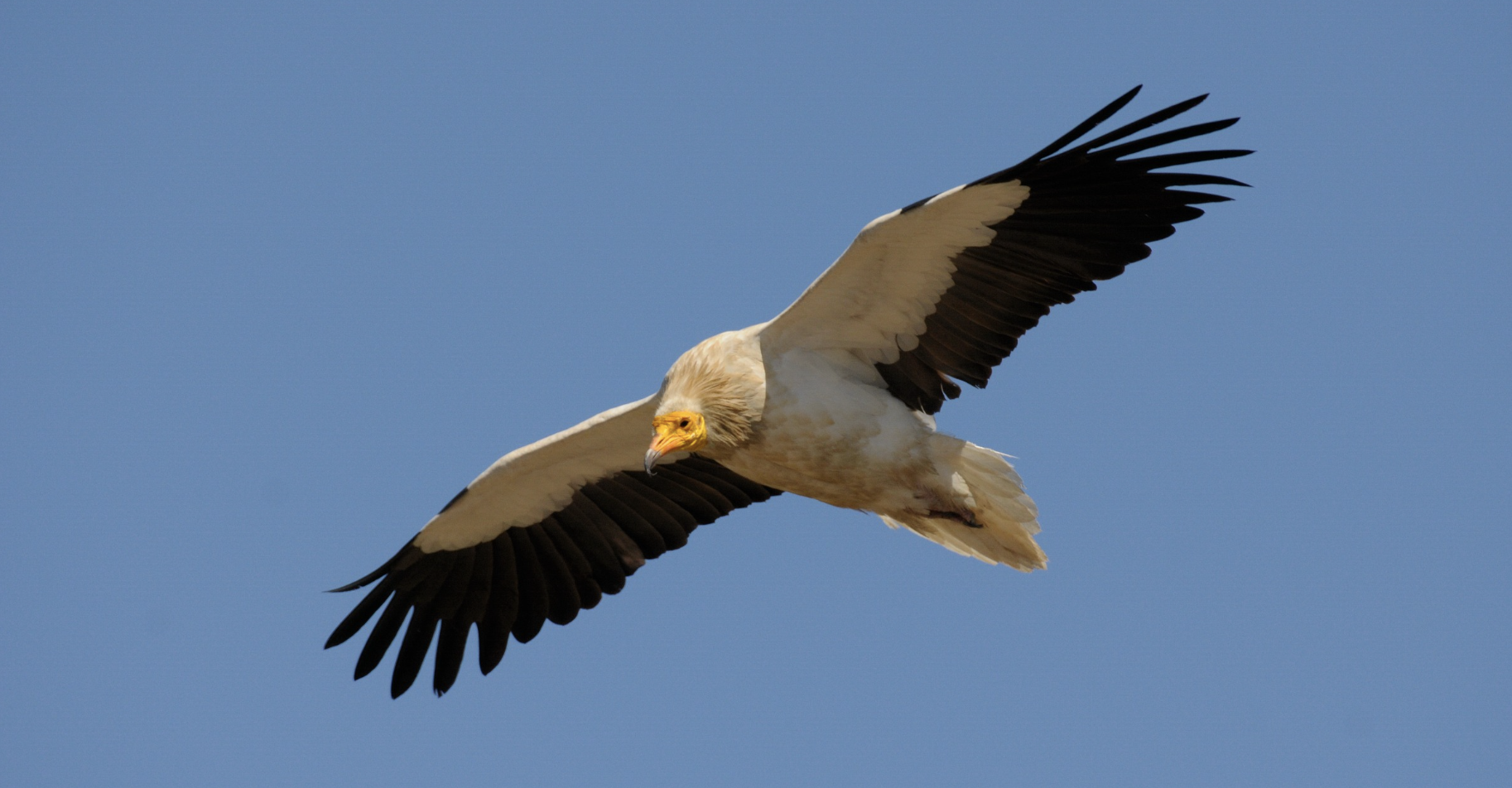
Within the framework of the LIFE Re-Vultures project, four new electric poles were insulated in the Rhodope Mountain in Bulgaria as part of the efforts to protect Cinereous and Griffon Vultures in the region.
The insulation of dangerous electric poles is one of the most important direct conservation activities of the Project. Until now, the project insulation 171 high-risk poles to birds in the Eastern Rhodopes and installed diverters on a 1.5 km power transmission line.
The threat of electrocution and collision to vultures
Unsecured pillars are just one of the many threats that vultures and other birds in the Eastern Rhodopes face daily. Unfortunately, vultures and other birds are not always able to see the wires in front of them, which causes collisions. When flying or landing on dangerous pillars, birds often touch the wires and die as a result of an electric shock. As a result of electrocution or collision, a large number of birds die every year. These incidents have adverse effects on the populations of protected bird species, including vultures, so it is important to reduce and eliminate any potential threats.
Securing pylons near vulture colonies
“Located between two Griffon Vulture colonies in the area of Patronka and Kovan Kaya, the line in Madzharovo was among the priorities to insulate. The secure now line is the one where a young Egyptian Vulture released in the area died last year. The most dangerous are the electric poles on the ridges and high parts, because they stand on the vultures flyway from and to the nests and feeding places. Particularly risky are those with a forest background or slope. They are not easy to see and identify as a threat and that is why they are risky for vultures and other birds”, commented Dr. Dobromir Dobrev, an expert from the Bulgarian society for the protection of Birds (BSPB). In addition to vultures, the poles endanger several other birds, including large soaring, non-soaring, predatory, waterfowland other bird species.
Insulators are special plastic products that are placed on the wires near the ladder and thus prevent the bird from touching the wire while landing or taking off, which helps reduce the risk of electric shock. The length of the isolators is in accordance with the size of large birds of prey, such as vultures. In addition to insulating equipment for better security of the poles, other equipment–diverters are placed. These are sun-reflecting plates that hang along the wires. They make rotating movements and reflect light, thus signalling to the birds that there is an obstacle in front of them, which helps them avoid, preventing collisions.
The materials were purchased and delivered to the Rewilding Europe within the project ‘Conservation of black and griffon vultures in the Rhodope Mountains’.
Source: Rewilding Rhodopes
LiFE Re-Vultures

Starting in 2016, the five-year LIFE RE-Vultures project was developed by Rewilding Europe, in collaboration with the Rewilding Rhodopes Foundation the Bulgarian Society for the Protection of Birds, WWF Greece, the Hellenic Ornithological Society and us here at the Vulture Conservation Foundation. The aim of the project is to support the recovery and further expansion of the populations of Cinereous and Griffon Vultures in the cross-border region of the Rhodope Mountain by improving natural prey availability, monitoring movements of birds to help understand the threats they face and carrying out activities that will reduce the mortality of the populations from threats such as illegal wildlife poisoning and collisions with electricity infrastructure.




